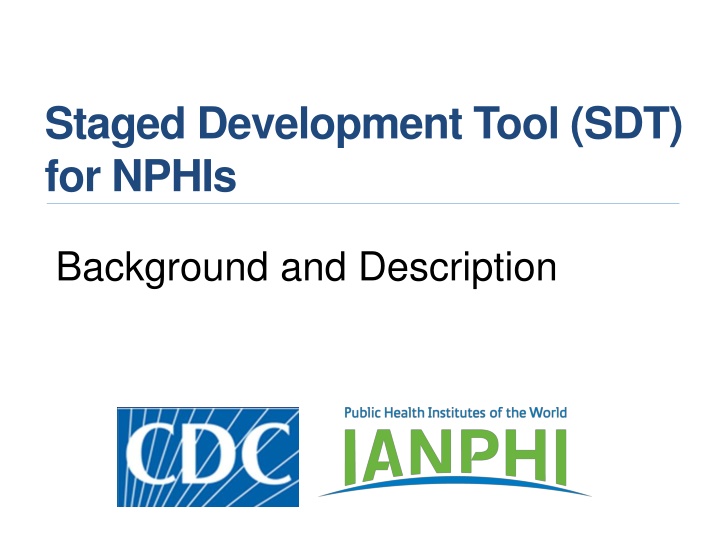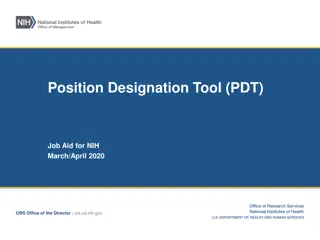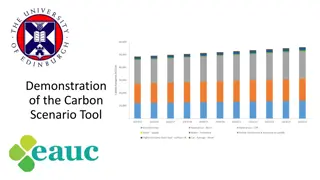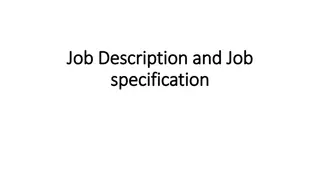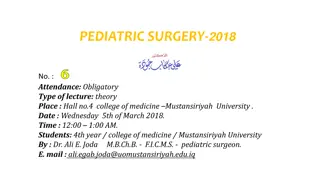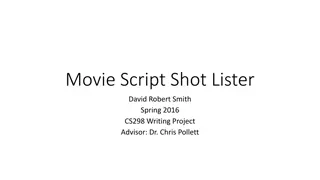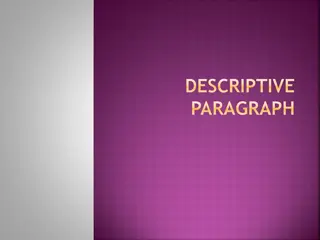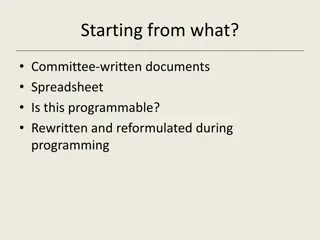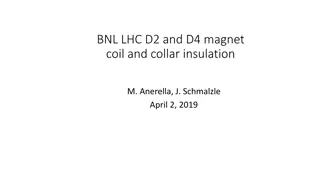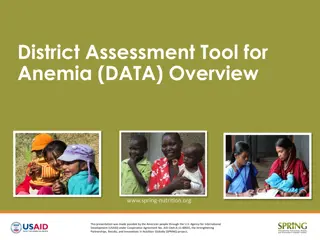Staged Development Tool (SDT) for NPHIs - Background and Description
The Staged Development Tool (SDT) is designed to assist NPHIs in operating at a higher level by following a 3-step process - ASSESS, PRIORITIZE, and PLAN. It includes discussion guides and forms for assessment and work-planning. The tool utilizes maturity models and discussion guides to evaluate various domains such as strategic direction, systems, resources, quality, engagement, and impact. Participants engage in in-depth discussions to define their stages of development and identify gaps for improvement.
Download Presentation

Please find below an Image/Link to download the presentation.
The content on the website is provided AS IS for your information and personal use only. It may not be sold, licensed, or shared on other websites without obtaining consent from the author.If you encounter any issues during the download, it is possible that the publisher has removed the file from their server.
You are allowed to download the files provided on this website for personal or commercial use, subject to the condition that they are used lawfully. All files are the property of their respective owners.
The content on the website is provided AS IS for your information and personal use only. It may not be sold, licensed, or shared on other websites without obtaining consent from the author.
E N D
Presentation Transcript
Staged Development Tool (SDT) for NPHIs Background and Description
Topics Assessment Prioritization Work-Planning
What Is the SDT? A process and toolkit to help NPHIs function at a higher level. Involves 3 steps 1. ASSESS 2. PRIORITIZE 3. PLAN Includes Detailed Discussion Guides Forms for assessment and work-planning
Step 1: Assessment Maturity models guide the assessment A maturity model describes stages of development Basic Developing Advanced Leading Edge 30 Discussion Guides describe stages for a range of topics Internal-facing Discussion Guides e.g., leadership and management, health and safety, and internal communications External-facing Discussion Guides (overlap with Core Public Health Functions) e.g., surveillance, research, emergency response, and data-to-action
Discussion Guides Title Four columns, one for each of the stages Numeric scores allow for more nuanced staging Each of the columns contains descriptions covering 6 Domains: Strategic Direction Systems Resources Quality Engagement Impact
How are Discussion Guides Used? Participants read the relevant Discussion Guide silently and, as a group, guess their stage of development Going Domain-by-Domain, participants: Have in-depth discussions to define their score, providing detailed justifications for their proposed scoring Identify their desired score for that Domain the score they would like to achieve within a defined timeframe Identify the gaps they need to be filled to get to the desired score After all the Domains are discussed, participants provide an overall current and desired score for the topic covered by the Discussion Guide Key points are recorded on the Assessment Form
The Assessment Form Discussion Guide Title Current Score Justification/Examples Desired Score Gaps Domain Strategic Direction Systems Resources Quality Engagement Impact Overall Score
The Assessment Form (example) Surveillance Desired score Justification/Examples Current Score Gaps Domain NGOs asking us to prioritize their issues. Decisions about surveillance are based on donor input. For meningitis surveillance, we just send the info to WHO, don t even analyze it The way we do respiratory pathogen surveillance, we don t have denominators and can t calculate rates; limits use of data for vaccine policy We haven t had any discussion with the MoH on their priorities We could use funding for data analysis and supplemental data collection, but we haven t established priorities and haven t written out what we need NGO priorities not taken into account. We don t modify reporting to meet our needs (e.g., respiratory pathogens, denominators) Although data are collected, we don t have plans for analyzing and using the data (e.g., meningitis) Lack of info on MoH needs We haven t developed a plan that we can take to funders laying out our priorities 7 4 Strategic Direction
Step 2: Prioritization The next step after assessment is prioritization Prioritization can be done using the SDT forms as the basis for discussion Other approaches, such as multi-voting or criteria matrices, may also be useful, either on their own or in combination with using the SDT forms Whatever approach or approaches are used, careful definition of the gaps is essential as a basis for good work-planning
Step 3: Work-Planning Work-planning can follow directly after prioritization or be done at a later time Work-planning should focus on the highest priorities Using the SDT Work-planning Form or another planning tool, identify the action steps, including milestones and due dates, and who is responsible for each step Gaps Activities Milestones Who When No plans for analyzing and using data 1. Develop an analysis plan and analyze priority datasets (meningitis, respiratory pathogens) 2. Develop a report on findings, with recommendations 1a. Analysis plan developed (1 month) 1b. Statistical group contacted, review plan, promise support (NOTE: need to think through denominators) (2 months) 1c. Analyze data 2a. Develop format for report 2b. Create report 1. Lola (Mening) Alex (Resp) 1b. Francois 1c. Lola and Alex, with help from Stats group Would like to have report completed before next elections (9 months) 1. 6 months 2a. Alan 2b. Alan, Ellen, Alex 2a. 3 months 2b. 9 months Lack of info on MoH needs 1. Develop a plan for identifying and addressing MoH priorities (Note: This priority will not be fully developed until we get input from NPHI and MoH 1a. NPHI Dir or Deputy meets with Minister or DG to identify priorities, or whether need to talk to MCH and others/form working group to 1a. NPHI Dir or Deputy need to check 1b. NPHI Dir or 1a. 2 weeks 1b. 3 months
When Done Work-Planning, Review the Plans If the NPHI completes the work-plan, will it make the desired progress towards achieving the desired stage? Are additional resources needed? What is the plan for obtaining them? Do all NPHI staff understand their roles in carrying the plan forward? Does leadership understand and support the plan? How will progress be monitored?
Good Luck with Planning Using the SDT! If you have any comments or questions about this material, please contact CDC s NPHI Program nphisdt@cdc.gov Or IANPHI info@ianphi.org
